|
When running with the weighted rucksack – I use the two broad aspects of Daoist breathing usually termed ‘natural’ and ‘correct’. Bear in mind that this ‘moving’ activity is not the complex seated ‘neidan’ practice and is not subject to that type of control. Instead, as the bodily frame is placed under intense pressure, what is required is deep and full breaths, usually in and out of the mouth. This is because unlike the state of perfect balance that is constructed during the practice of Taijiquan (where the breath is taken in through the nose and expelled through the mouth) - running with a weighted rucksack overloads the biological processes to such a high degree that the maximum amount of oxygen is required to maintain its function. This is achieved by breathing in and out through the mouth. Once the parameters are set, what then is ‘Daoist’ about this practice? Natural breathing requires breathing deeply into the lower abdomen – this emphasises the use of the middle and lower-lung capacity – with the minimum of upper-lung capacity. Correct breathing requires the pushing-up of the diaphragm so that the inward breath is compressed from the expanded lower-lung and into the middle and upper-lung. Correct breathing inflates the usually neglected upper-lung capacity which is full of highly dense oxygen-absorbing body-cells. Generally speaking, the upper-lung is often used by the body in ‘emergency’ breathing if the body has become injured, ill, or is inhabiting an oxygen-deficient environment. The ancient Daoists seem to have understood that there is something special about the little used upper-lung within everyday life – and with this understanding they formulated a physical method of breathing that allows a voluntary access of this area. I tend to use ‘natural’ breathing when running with the weighted rucksack – but I switch to the ‘correct’ method when I need to stop to cross the road and/or significantly change direction. I usually take three full ‘correct’ breaths (which oxygenates the body to a greater degree) and then switch back to ‘natural’ breathing which is what I refer to as ‘maintenance’ breathing. Correct breathing in this context is not ‘maintenance’ breathing and should not be confused with the purpose of ‘natural’ breathing. Furthermore, the perspective I am giving here only makes sense when discussing weighted rucksack running. As weighted rucksack running using ‘natural’ breathing dramatically diminishes the oxygen levels in the body (stabilised through fitness levels) – ‘correct’ breathing represents a rapid intake of new oxygen by switching the emphasis of how the breath is managed.
0 Comments
Our family style of Hakka Gongfu involves "Rucksack" running as both an "External" and an "Internal" practice method which builds muscle and joint power, bone strength, and psychological determination and indomitable spirt! As the pack weighs 56 lbs at its maximum weight (it can sometimes be raised to 76 lbs - but this is rare) - it is also a good indicator of developing and maintaining (skeletal) body-alignment - important for dropped body-weight and rebounding power found in the Internal method found in Taijiquan. When young, rucksack running is "External" - whilst for the older practitioner rucksack running becomes "Internal" - and has to be modified as a practice. Long distance running can be interspersed (or changed with) the shorter distances involved in circuits-training. Either way, the positive effects on the mind and body are absolutely the same: I have been pursuing a three-month circuit-training of five-days a week running three-time around the block (Monday-Friday) - carrying the 56 lbs pack. Running in urban environments is easier in one way as the surfaces tend to "flatter" than their "cross-country" (off-road) equivalents. However, running with a weighted rucksack is dangerous as when falling down the impact with the ground is magnified by the extra weight being carried. Falling upon grass, in mud or through water, for instance, is preferrable to falling upon concrete, as such a tumble "cushions" the fall. Yesterday (Monday), at around 830 am, I was slightly distracted whilst running over a broken piece of tarmacked pavement. This happened during the 66th run of my intended 70 - a training stint which will conclude this Friday (December 22nd, 2023). My legs were cut-out from beneath me and I fell onto my hands and knees - with the rucksack propelled upwards and over my right-shoulder. My palms soundly struck the pavement - saving me from a face injury - with my well-conditioned hands suffering no damage. Most the weight, however, entered the ground through my left-knee. My right-knee took about half as much impact. the friction (heat) between the surface-skin of my knees and the fabric of my running-trousers caused the surface-skin to "rub-off" - as can still be seen above. This is why I now have substantial knee-abrasions. A passing neighbour - who was astonished to see me tumble past him - stopped to help me up. This was not as easy as it might have looked - as I had to readjust the heavy pack, and rearrange my legs and knees to attempt an upward thrust from the ground in good order (from a kneeling on one-knee position). This I successfully achieved - thanking my Muslim neighbour for his truly caring attitude. This is why I replied "Peace to you - my friend"! I then reassumed my training - showing a "straight" and "committed" mind-set in the face of adversity - finishing that day's training. When I got home, my partner - Gee - carried-out her usual "nursing" function of repairing the war-wounds of her Hakka Warrior husband using the family Dit Da Jow to clean and dress the wounds. Today, I was up early to continue my training in the rain!
These ideograms are written in Old Chinese Script - but pronounced using Japanese and Okinawan language. [square] brackets = Chinese pronunciations (round) brackets = Japanese-Okinawan pronunciations a) 補 (Ho) = [bu3] - increase, aid, repair, supplement, mend, compensate and nourish b) 助 (Jo) = [zhu4] - help, support, augment and assist c) 運 (Un) = [yun4] - transport, carry, utilise, revolve, buoyancy and fate d) 動 (Do) = [dong4] - move, act, alter, momentum and touch It seems that the four ideograms are deployed using two couplets: 1) 補助 (Hojo) = supplement and auxiliary [Buzhu] 2) 運動 (Undo) = sporting and competitive vigorous movement [Yundong] The following is a contemporary webpage from Taiwan (auto-translated into 'English' entitled '法規內容-教育部運動發展基金補助各級學校運動團隊作業要點') continuously uses the term '補助運動' (Hojo Undo - Buzhu Yundong) - which is used exclusively to refer to 'supplementary sporting exercises': The inclusion of the terms 'buoyancy', 'touch', 'transport', 'momentum' and 'fate' - all suggest an 'internal' management of the 'external' (physical) body (through the attainment of an 'effortless momentum'). Therefore, although this term is common-place in China - the mastery it refers to is certainly not common-place. On the one-hand, a man or woman might train to win a Gold Medal or World Title - but these achievements (as important as they are for the 'Nation') only fall inside the 'external' component of this term. On the other-hand, Karate-Do Styles such as Goju Ryu exemplify the principle of the 'internal' superseding the 'external' - even though a lifetime must be spent subsumed in the 'external' whilst attempting to understand this relationship and transition into the infinitely powerful 'internal' position. Of course, ultimately, both the 'external' and the 'internal' integrate into a perfect, functioning 'whole' - as can be seen during a perfect execution of a Kata.
Dear Tony The Chinese language description states that Seisan Kata derives from a 'Form' found within the 'Incense Shop Fist' (香店拳 - Xiang Dian Quan) Style. Xiangdian is a district in Fuzhou City, Fujian province. This is one of the thousands of lineages completely uneffected by the political changes in China - and which has been falsely recorded in the West as 'being wiped out', etc. This is the Chinese language encyclopaedia page: '香店拳源于清乾隆年间。南少林武僧智远为报香店人救命之恩,在此密传罗汉拳,隐名为“香店拳”。后经香店历代拳师吸取各派精华,形成了独特的香店拳,并流传于海内外。 [4] 香店拳是内外合一、硬气功兼练的技法拳种,分上、中、下三盘,善于短打近攻。武术套路有硬三战、三战等十多种套路,甚为独特。' 'Incense Shop Fist (香店拳 - Xiang Dian Quan) originated during the Qianlong period of the Qing Dynasty (1735-1796). The Southern Shaolin Temple Warrior-Monk named 'Zhiyuan' (智远) - in order to save the lives of the people living in the 'Xiangdian' area of Fuzhou City - secretly conveyed to them the techniques retained within the Shaolin gongfu Style known as Luohan Fist (罗汉拳 - Luo Han Quan). As he wanted to keep this interaction 'secret' - Zhiyuan referred to this Style as being called 'Xiangdian Fist' - giving the impression it was a local form of fighting already known by the people. As time progressed, however, Zhiyuan integrated (and absorbed) the essence of many other (different) gongfu arts and slowly the 'Xiangdian Fist' started to evolve - becoming very different from Luohan Fist. The effectiveness of this Style became famous and it was spread throughout China and abroad. Xiangdian Fist incorporates the unity of the 'internal' and 'external' (内外合一 - Nei Wai He Ye) and 'firm' qigong (硬气功 - Ying Qi Gong), etc. All this ability is manifested simultaneously in the mind and body of an advanced practitioner. The opponent is peppered with close-in and short-range (very powerful) techniques delivered to the continuously varying heights of high, middle and low. There are at least ten different and unique 'Forms' - including a 'firm' (hard) version of 'San Zhan' (三战) or 'Three Battles'.' A well-known Xiangdian Fist Master today is 'Yan Mengyong' (严孟永) [b. 1950] who started training with his uncle - Fang Ligui (房利贵) - in 1968. In November 1978, he was invited to participate in the First Wushu Observation and Performance Conference in Fujian Province with his master - Fang Ligui - and won an award. Since then, Master Yan Mengyong has taught Disciples from all over China - with his gongfu spreading to Hong Kong, Singapore, the United States - as well as many other places!
This is a ‘Summary’ of my research regarding the ‘internal’ (within the ‘Miyagi’ family) and ‘external’ (outside the ‘Miyagi’ family) transmission of Goju Ryu (which is NOT complete by any means) - but which provides a basic (historical) framework (post-1945) which is often obscured by the insular nature of the existing lineages. As someone of part Chinese descent, and whose family suffered at the hands of Japanese Nationalism during WWII in China – I do not in any way support or condone Japanese Nationalism or the racism and fascism that permeated Japanese culture between 1868-1945, etc. As a historian, however, I find it interesting to study and clarify how an aspect of exported Chinese martial culture developed in another country! Lineages, by their very nature, tend to only recognise their own transmission structures whilst inherently refusing to recognise a) the ‘existence’, and b) the ‘relevance’ of other (similar) lineages. This is because traditional martial art ‘lineages’ originating from within China, Okinawa and Japan – have either grown out of actual families (associated with specific ‘Clan’ surnames), or monastic, religious or spiritual associations and/or other special individuals, etc. This is a Confucian tradition that traces reliability and strength through its preserving structures - as those institutes that are replicated (continuously) from one generation to the next. Indeed, the present generation of teachers link the past (of the tradition) not only with the present – but also with those practitioners yet to materialise in the future! This is a grave duty and responsibility within the Confucian tradition that permeates many daily aspects of everyday culture through many Asian countries. Although ‘content’ and ‘interpretation’ can vary widely between teachers representing the same tradition – there is no reason why there should be a difference in ‘quality’ between ‘internal’ and ‘external’ transmissions as this designation is genealogical in nature and does not correspond in any way to ‘external’ (Yang) and ‘internal’ (Yin) mastery within the martial art being transmitted. A thumbnail transmission map of Fuzhou White Crane Fist, Higaonna Naha-Te and Goju Ryu Karate-Do may look something like the following – at least in blueprint: Xie Chongxiang [謝崇祥] (1852-1930) - Fuzhou White Crane Fist Master (this identity is disputed). Higaonna Kanryo [東恩納寛量] (1883-1915) - As a ‘foreigner’ from Okinawa (and being from ‘outside’ the ‘Xie’ family) he inherited an ‘external’ lineage of this White Crane Fist martial art during 1881. Higaonna Kanryo was in China between 1867-1881 (this dating is disputed). Miyagi ‘Internal’ Family Lineage (1915-1980) Miyagi Chojun [宮城長順] (1988-1953) - Miyagi Chojun inherited an ‘external’ (that is a lineage of Naha-Te ‘outside’ the Higaonna family) during 1915 – just prior to the death of Higaonna Kanryo. Between 1915-1953 – Miyagi Chojun invented and developed Goju Ryu Karate-Do. Miyagi Takashi [宮城敬] (1919-2008) - This is the eldest son of Miyagi Chojun who inherited the ‘internal’ (that is ‘inside’ the Miyagi family) lineage of Goju Ryu Karate-Do and started teaching during 1951 (in Tokyo). During 1955, on the 3rd Commemoration of the passing of Miyagi Chojun (October 8th) - Miyagi Takashi founded the ‘Transmitting Brilliance Training Hall’ (講明館 - Ko Mei Kan). He transmitted this ‘internal’ Miyagi lineage to his eldest son - Miyagi Toru [宮城徹] (b. 1947). In-turn, Miyagi Toru has already (formally) passed this ‘internal’ Miyagi family lineage to his second eldest son – Miyagi Manabu [宮城学] (b. 1980). Goju Ryu ‘External’ Transmissions (1935 Onwards) Japanese language sources state that at the age of 14-years old (in 1923) - a Japanese national (and former soldier) named Yamaguchi Minoru (b. 1909) – met a Capenter from Okinawa named ‘Marutani Takeo’ [丸谷武雄] who taught him ‘Karate’. In 1929, Yamaguchi Minoru founded the ‘Goju Ryu Karate-Do Kempo Dojo’ on the site occupied by the ‘Shinsengumi Garrison’. During the same year (1929), Yamaguchi Minoru entered the Ritsumeikan University (Kyoto) - to study law. Here, he founded the ‘Karate-Jitsu Study Group’ - with ‘Karate’ being written as ‘Tang Hand’ (唐手 - Tang Shou). The ideogram for ‘Jitsu’ (術) referring to a ‘war art’. In 1931, Yamaguchi Minoru invited Miyagi Chojun to Ritsumeikan University (Kyoto) - and began many years of receiving instruction. Between 1935-1936, Miyagi Chojun returned to Mainland Japan and transmitted his Goju Ryu Karate-Do system to a number of interested Japanese students living within Kyoto (and other places). Whilst teaching at Ritsumeikan University (Kyoto) - Miyagi Chojun continued to instruct ‘Yamaguchi Minoru’ {山口實実) to whom he would eventually grant the first name ‘Gogen’ [剛玄] (Strong Mystery) and transmit the ‘external’ lineage of Goju Ryu Karate-Do around 1937 – giving permission for ‘Yamaguchi Gogen’ to teach Goju Ryu Karate-Do throughout Mainland Japan! In 1950, Yamaguchi Gogen established the ‘All Japan Karate-Do Gojukai’ - with Miyagi Chojun agreeing to be honorary Chairman. During 1951, Miyagi Chojun awarded Yamaguchi Gogen a 10th Dan Black Belt grade – with the rank of ‘Hanshi’ (範士) - or ‘Master’. During 1952, Miyagi Chojun transmitted an ‘external’ lineage of Goju Ryu Karate-Do to Yagi Akitoku [八木明德] (1912-2003). It is said that Miyagi Chojun granted permission for Yagi Akitoku to open his own ‘Dojo’ to teach Goju Ryu Karate-Do – and that this is the only ‘external’ (or ‘outsider’) Dojo that Miyagi Chojun allowed to be founded during his lifetime. According to this history – a ‘belt’ and ‘training uniform’ was transmitted by Miyagi Chojun to Yagi Akitoku (which reads very similar to the ‘robe’ and ‘bowl’ being transmitted by Zen Masters to their disciples). During 1957, Yagi Akitoku founded the ‘Brilliant Warrior Training Hall’ (明布馆 - Mei Bu Kan) in Okinawa. (As an aside – it is interesting that the ‘Komeikan’ and the ‘Meibukan’ both make use of the Chinese ideogram ‘明’ [Chinese = Ming – Japanese = Mei) - which translates as ‘bright’, ‘clear’ and to ‘understand’, etc. This suggests that this Chinese ideogram possessed an important meaning and association to Miyagi Chojun. During 1955, a group of students who had trained with Miyagi Chojun during his lifetime, gathered together in Okinawa to ‘vote’ for a new representative of the ‘external’ (that is, ‘outside’ the Miyagi family) Goju Ryu Karate-Do tradition. This group chose ‘Miyazato Eiichi’ [宮里栄] (1922-1999). Through his student ‘Higaonna Morio’ [東恩納盛男] (b. 1938) - Goju Ryu Karate-Do spreads throughout the world! According to Chinese language historical records, Higaonna Morio was associated with ‘Miyagi Anichi’ [宮城安一] (1931-2009) who although possessing the same Clan surname of ‘Miyagi’ - was not directly related to Miyagi Chojun with whom he trained from 1948-1953 (exclusively so - between 1949-1951). It is said that both Miyagi Anichi and Yagi Akitoku were friends who were accepted together as disciples by Miyagi Chojun during 1948. Whilst being called ‘Miyagi’, however, Miyagi Anichi would have inherited an ‘external’ lineage of Goku Ryu Karate-Do – if indeed any such formal transmission took place. Conclusion Obviously, all the sons of Miyagi Chojun would have had an equal and consistent martial arts education, and all could clam an equal right to representing an ‘internal’ Goju Ryu Karate-Do lineage (with this right extending to the Miyagi male off-spring in the traditional model and their male and female off-spring in the modern system). Even within the traditional system this would be consider true – with the caveat that Miyagi Takashi (the eldest son) would possess the authority to decide important issues. Furthermore, the Miyagi family probably taught many people from outside their family – with some of these people possessing the right to claim an ‘external’ Goju Ryu Karate-Do lineage. By the time of the passing of Miyagi Chojun (in late 1953) at least two Goju Ryu Karate-Do lineages had been established: a) Miyagi Takashi (1951) - ‘Internal’ (Tokyo) b) Yagi Akitoku (1952) - ‘External’ (Okinawa) This being the case, an interesting question is why did a group of Miyagi Chojun students-disciples (who had trained with Miyagi Chojun during his lifetime), choose NOT to recognise the authority of Miyagi Takashi (his eldest son) and Yagi Akitoku – a very well-established ‘external’ disciple? By choosing ‘Miyazato Eiichi’ as a contemporary Goju Ryu Karate-Do ‘authority’ - a ‘new’ external martial lineage was generated – a lineage not created by Miyagi Chojun during his lifetime or the Miyagi family after his death. Having said all this, however, the intended ‘lineage’ of Goju Ryu Karate-Do may not be as straightforward as implied above, as it is well-known that Miyagi Chojun’s best ‘disciple’ was ‘Shinzato Jinan’ [新里仁安] (1900–1945) - who obviously was not from the ‘Miyagi’ family. As ‘Shinzato Jinan’ died during the final days of WWII – Miyagi Chojun had to make other plans with regards to preserving and transmitting Goju Ryu Karate-Do. Again, Chinese language historical sources state that it was Miyagi Chojun’s other (external) disciple ‘Seiko Kina‘ [嘉纳正兴] (1911-1994) - who was also permitted to teach students in his own right during Miyagi Chojun’s lifetime!
Miyagi Takashi [宮城敬] (1919-2008) – Miyagi Family Inheritor of Goju Ryu Karate-Do! (17.10.2022)10/18/2022 ‘I was born in Naha City during August 1919 (Taisho 10) and I am the eldest son of Miyagi Chojun (1888-1953) - the founder of Goju Ryu Karate-Do! My father taught me how to use my ‘hands’ (手 - Te) and ‘feet’ (足 - Ashi) during every moment of the day! He taught me where to ‘walk’ on the road, pavement or path – and where to place my awareness to stay safe! In a similar vein – he taught me how to hold an umbrella properly so that it looks innocuous but is really a ‘weapon’ that can be used in self-defence! For the Miyagi Family – Karate-Do was not only practiced in the ‘Dojo’ - but training of the mind and body continued throughout the entirety of our lives! My father – Miyagi Chojun – was a very popular person and knew many interesting and important people! He often told me about the famous people living in Okinawa - including military personnel and literary figures - who had come to live and work in Okinawa. Due to his wide range of associations, my father was well read, well-educated and took a general (and specific) interest in many different and varied subjects. As my father took me everywhere with him when I was young – I also met these people and often witnessed (and absorbed) the discussions as they unfolded! This is how my father ensured that I had a well-rounded education premised upon practical experience and intellectual stimulation! This is how I started the development of my mind and body and developed a sound foundation in the understanding of Karate-Do! I also understood exactly how my father thought about life and his general attitude toward Karate-Do! His personality clearly shone through during these interactions! As my father – Miyagi Chojun – believed that travelling expanded the mind, he advised me to travel to Kyoto and enrol for the Summer in a Martial Art College and study ‘Kendo’ (剣道). He respected Kendo and was very enthusiastic about me learning a different martial art! Indeed, through me experiencing Kendo training – I gained a far deeper understanding of Goju Ryu Karate-Do! My eyes were opened to a far broader view. I particularly benefitted from the Kendo technique of ‘Kakari Geiko’ (掛かり稽古). These are the techniques within Kendo which involve the development of a sound ‘defence’ - coupled with a penetrating and devastating ‘attack’. I used this experience (and knowledge) gained through my Kendo training in my later development of Goju Ryu Karate-Do! Shifu (師父) - we always referred to Miyagi Chojun by the respectful Chinese language term of ‘Master-Father’ - put a great emphasis upon ‘Preliminary Exercises’ (予備運動 - Yo Bi Un Do) that both ‘warm’ and ‘strengthen’ the bones, ligaments (joints), muscles and tendons! As these exercises are so demanding and arduous to perform and repeat – the ‘mind’ is fully developed as it is ‘calmed’ and ‘stilled’ over time! I took this crucial element of Goju Ryu Karate-Do training and developed it further so as to progress the Style. I developed what is referred to as ‘Hard-Soft Body Manipulation’ (剛柔体操 - Go Ju Tai Misao)! This is sometimes referred to as ‘Goju Body Mechanics’. This is a development within Goju Ryu Karate-Do that all of our students a) learn and b) perform – at the beginning of each public training session held in a Dojo. (The same situation applies to closed ‘private’ lessons where groups of students are training in a Dojo). Miyagi Chojun always followed the same training habits as his teacher Higaonna Kanryo (learned in China) - which involved the performing of the ‘Sanchin’ (Hourglass), ‘Shiko’ (Horse-Square) and ‘Nekoashi’ (Cat) Stances as ‘warm-up’ techniques. Miyagi Chojun was very strict when teaching these stances and would shout very loudly at the beginning of a training session to encourage the flow of energy and attentiveness of a student! The stance work teaches how to drop the bodyweight correctly, how to stand ‘still’ (rooted to the spot) and how to project the rebounding force forward and back correctly. Whilst practicing kata, Miyagi Chojun stated that each Kata possesses various (inherent) characteristics - such as how to stand, how to use the hands, how to use the legs and feet to kick correctly and how to move in any direction properly amongst many other important attributes. I was told to think carefully about what the concept of each individual Kata meant - and how each individual movement within each Kata should be accurately interpreted and performed. A defining aspect of Goju Ryu Karate-Do is that ‘distance’ is rapidly closed from ‘far’ to ‘near’ in a manner that exposes the opponent to danger whilst keeping the practitioner (traversing the ‘distance’) safely protect (through a superior technical positioning). This means that although there are variations and contradictions within the Kata movements of Goju Ryu Karate-Do – the emphasis is always upon ‘closing’ the distance and engaging the opponent with effective (and devastating) close-quarter-combat. The opponent is inundated and overcome with a variety of rapidly deliver and perfectly timed (powerful) martial interactions – involving the effective movement of the arms, legs and torso, etc. The movements, although ‘attacking’ - are delivered in such a manner that ensures the Goju Ryu Karate-Do practitioner is ‘safe’ whilst inhabiting the quiet ‘centre’ inherent within each set of movements. Quite often, words do not convey the totality of the defining principles of Goju Ryu Karate-Do – but words do serve an important supporting role in the teaching process. Obviously, individuals will understand what is said and taught to them according to their age, maturity and level of experience. This is why an effective teacher understands this and applies the teachings of Goju Ryu Karate-Do according to the level of awareness that a student brings with them into the Dojo. After-all, a good teacher is able to produce an equally good and effective student. When Master Miyagi Chojun passed away in 1953, I (Miyagi Takashi) was recognised throughout the Miyagi Clan in Okinawa as the true ‘Inheritor’ of the Goju Ryu Karate-Do ‘Lineage’. This is the ‘Family’ lineage which is separate and distinct from those other numerous ‘lineages’ transmitted ‘outside’ the family. The ‘Family’ transmission represents the ‘internal’ lineage – whilst all the other transmissions are representative of the ‘external’ lineage. This does not imply that one transmission is better or worse – but rather merely ‘different’. In the ‘Name Temple’ the pictures and the urns holding the cremated remains of the Miyagi Family are obvious for all to see (stretching back hundreds of years). I am part of this ‘Family’ transmission – whilst all those sharing in the ‘external’ transmissions have their own ‘family’ lineages that are separate and distinct (and all equally valid in their own right). Furthermore, it used to be that the ‘internal’ (Family) transmission was only taught (privately) within the family – whilst the ‘external’ lineages were public – but today, generally speaking, ALL ‘lineages’ are publicly taught to anyone who wants to learn. As for myself, I developed the ‘Komeikan’ (‘Transmitting Brilliance Training Hall’) during my time living in Tokyo to teach Goju Ryu Karate-Do (from 1951 onwards) to the general public as the only representative of the Miyagi Family. I have conveyed the teaching of my father – Miyagi Chojun – in a logical and correct manner, whilst also adding my own understanding. This is a process of evolution encouraged by both Higaonna Kanryo and Miyagi Chojun. Tradition is protected and conveyed through a process of continuous and relevant improvement.’ Japanese Source Article: 空手道剛柔流宗家として 剛柔流開祖宮城長順の長男として1919年(大正10年)8月那覇市に生まれた私は、幼少のころより師父の空手道人生と歩を一にしてきた。日常生活のなかで教えてくれた「手」の使い方、「足」の使い方、あるいは道を歩くときの注意、傘の持ち方等々、それら一つひとつが空手道における身体と精神の在り方の教訓であった。師父は人との交際も広く、沖縄在住の高名な方々や沖縄に来られた軍人や文人の方々について私によく語ってくれた。師父は、そうした広い交際をとおして、いわば教養人でもあった。私は常に師父の傍らに居ることで、その生活に溶け込んだ空手道精神と、その人生観、人格から多くを学ぶことができた。
私が京都の武道専門学校の夏期講習で剣道を修めたのも師父の奨めであった。この剣道修行は、私の空手道修行に新たな眼を開かせてくれ、掛かり稽古をはじめとした剣道の修練方法は、後の私の空手道指導法に大いに役立った。 師父の私への指導は、「予備運動」をまず徹底してやることだった。私はこの予備運動を「剛柔体操」と名づけ、 弟子たちの修練の最初に必ず行わせている。師父はまた、サンチン立ち、四股立ち、猫足立ち、前屈立ちなど立ち方をしっかり定義付け、非常にやかましく指導した。形の修練では、形の中にそれぞれ、立ち方、手の使い方、蹴り足の使い方、演武の方向などの様々な特徴があり、それらがどういう意味をもっているか、よくよく考えて修練するように言われた。 剛柔流空手道の形においては接近戦における妙技が至るところにある。これらはことばでもって十分に説明できるものではない。どう理解するかは修練者の武才というものもあるだろうが、やはり空手道の修練には良き師を得てはじめて真の空手道を会得するものであると思う。 私は師父宮城長順の死去により、空手道剛柔流宗家を受け継ぎ、空手道剛柔流宗家講明館を開設、講明館館長として東京において空手道の指導にあたってきた。私の指導法は、開祖宮城長順の指導法と指導精神を基礎に、戦後、私が考案した指導法の実際を取り入れて行っている。 Source: China Taiwan Network China Taiwan Net - August 30th, 2016 - Shiyan News (Reporter Zhao Miaoqing [赵苗青]): On the afternoon of August 29th, 2016 - organized by the Taiwan Affairs Office of Hubei Province – we participated in the ‘Use Your Wisdom-Eye to Understand the Foundation’ intuitive, which formed part of the ‘10th Cross-Strait Media Jingchu Travel Collective Activities’! This time the focus was on ‘Wudang Mountain’ (武当山 - Wu Dang Shan). The members of the team visited the following places of interest amongst many others: a) Wudang Mountain Geological Museum (武当山地质博物馆) b) Wudang Mountain Special Zone Planning Hall (武当山特区规划馆) c) Wudang Mountain Museum (武当山博物馆) d) Wudang Mountain Museum (武当山博物馆) The Wudang Mountain is a Daoist area of immense beauty designed to relax all inner and outer tension whilst generating unity, harmony, balance, peace and perfection! By being present in this place, the mind, body and spirit experience a ‘purification’ process (premised upon breathing deeply and fully the pure air), whilst the Daoist practitioners and Masters see right ‘through’ each and every person who happens to walk (or manifest) within their vision (or sensory sphere)! Of course, many people who visit have disabilities – just as some of the Daoist priests and Masters do! Everyone (and every living creature) is welcome and all that is felt is an uplifting ‘compassion’ and a ‘healing’ love for life and existence! Many visitors report a ‘new’ agility and ‘renewal’ of mind and body with the spirit (consciousness) being expansive and all-embracing! The area (and experience) is grand and majestic! The ‘qi’ (气) energy is truly ‘great’ and ‘uplifting’! An interesting point the Daoist Masters and Daoist priests wanted to emphasise is that ‘everyone’ is welcome to participate in the ‘humanistic’ quality of Wudang Mountain – the Daoism of which does not discriminate in anyway and which accepts ALL beings without question or condition! Inside the Wudang Mountains Special Administrative Region the sand-drawing table attracted media attention from both sides of the Straits! Everyone was amazed at the grandeur of its scale! On the last stop of the day, the team visited Jade Emptiness Temple - known as the ‘Forbidden City’ of the South! The Jade Emptiness Temple is located at the Northern foot of Wudang Mountain, within a basin area of 5 square kilometres. There are four imperial stele pavilions situated inside and outside the Temple – perfectly positioned so that each faces the other in a majestic manner (despite their differences in size)! In an area directly in front of the Jade Emptiness Temple, Master Yuan Xiugang (袁修钢) - the 15th Generations Lineage Descendent of the Wudang San Feng (三丰) School of ‘Internal’ (內 - Nei) Martial Arts – led a group of disciples through an impressive display of bodily movements of the arms, legs and torso! As a Daoist Priest, he responsible for the preservation and transmission of these ancient Daoist martial arts which can be spectacular to encounter! "The martial arts practiced on both sides of the strait share the same common cultural origin. There are many Taiwanese compatriots who come to Wudang Mountain to learn martial arts every year - but there are not many Taiwanese students who commit themselves fulltime to learning Wudang martial arts over the longterm and place themselves in a position to inherit the Wudang martial arts lineages - as this would be something we would definitely encourage." Explained Master Yuan Xiugang in a joint interview with media from both sides of the strait. When asked about the exchange of martial arts between the two sides of the Taiwan Strait, Daoist Master Yuan Xiugang said: ‘Since 1994, cross-strait martial arts exchanges have become more frequent. In the past, Taiwanese people mostly conducted Daoist cultural exchanges in the form of ‘incense’ groups (paying respect at various holy places). After more than 20 years of exchanges, however, the cross-strait martial arts have gained a deeper understanding of each other.’ He hopes to strengthen and deepen the cultural exchanges between young people on both sides of the straits using the Wudang ‘Internal’ martial arts tradition as the vehicle and hopes that more and more young people will systematically learn Wudang martial arts and pass on the complete (Internal) lineages in their hometowns and living locations. According to reports, Wudang martial arts conform to the operating state of the inner body and the reality of the ‘natural’ outer world. Therefore, when practicing these ‘internal’ martial arts, the disciples learn to ‘drop’ or ‘sink’ (沉 - Chen) their bodyweight into (and through) the ground they are standing upon – always being physically (and psychologically) firm and stable (like a ‘Pine Tree’) - when in a state of movement or stillness! The outside of the body becomes noticeably pliable and ‘soft’ (柔 - Rou) whilst the inside of the body becomes ‘toughened’ or ‘hardened’ (刚 - Gang) in the sense that if impressed or impacted in any way from the outside – the incoming force is absorbed and dissipated harmlessly away from the inner organs and lacks the piercing power to damage the joints or bones, etc. Wudang martial arts, however, are about the developmental health of the mind, body and spirit, protecting the natural environment and the REMOVAL of all conflict in the mind, body and environment, and between individuals, species and different systems of life choices, creativity and artistic expressions! With practice, Wudang martial arts practitioners learn to move about as if they are floating like clouds or flowing upon water! These abilities are considered unique within Chinese martial arts! This is why in 2006, Wudang martial arts were selected as part of the first batch of intangible cultural heritage arts considered truly representative of China’s historical genius and creativity! This process led the collection and categorisation of all such Daoist activities that comprise the ‘Wudang Internal Family Fist Law’ (武当内家拳法 - Wu Dang Nei Jia Quan Fa)! There are around 30 different styles being taught and practiced on Wudang Mountain which include ‘Taijiquan’ (太極拳) and ‘Taiyi Five Phases Fist’ (太乙五行拳 - Tai Yi Wu Xing Quan)! There are also 9 types of ‘Qigong’ (气功) which have attracted a substantial amount of attention from home and abroad! Chinese Language Source: 问道武当 两岸媒体玉虚宫寻武术精髓(图)
2016年08月30日 09:30:00 来源:中国台湾网 中国台湾网8月30日十堰讯(记者 赵苗青) 8月29日下午,由湖北省台湾事务办公室举办的“借你慧眼看基地—--第十届海峡两岸媒体荆楚行”采风活动,聚焦武当山海峡两岸交流基地。 采风团成员先后参观了武当山地质博物馆、武当山特区规划馆、武当山博物馆、玉虚宫等景点,亲身感受武当山的秀美灵动、宏大气势雄伟,领略武当山的自然之美、人文之美。武当山特区规划馆内的规划沙盘图吸引两岸媒体人驻足观赏,大家纷纷惊叹于其规模的宏伟壮观。 当日最后一站,采风团一行参观了素有南方“故宫”之称的玉虚宫。玉虚宫位于武当山北麓,坐落在5平方公里的盆地之上,宫内外有四座御碑亭,巍然对峙,亭内置石雕赑屃驮御碑,大小不一。在玉虚宫前,武当山三丰派第十五代武术传人袁修钢道长带领着其弟子整齐划一地挥舞着拳脚,场面颇为壮观。“两岸武术同宗同源,每年来武当山学习武当武术的台湾同胞有很多,但是专业学习武当武术能够系统的传承武当武术的台湾学员不多。”袁修钢道长接受两岸媒体的联合采访时如此表示。 被问及两岸的武术交流情况时,袁修钢道长表示:从94年起两岸的武术交流开始比较频繁,以前的时候台湾民众多是以进香团的形式进行道教文化交流。两岸武术经过20多年的交流互相之间有了更加深刻的了解。他希望加强两岸青少年在武术方面的交流,希望能有越来越多的年轻人系统的学习武当武术然后将它完整的传承下去。 据悉,武当武术以其松沉自然、外柔内刚,行功走架如浮云流水的独特风格,在中华武林中独树一帜。2006年武当武术入选中国首批非物质文化遗产,挖掘整理出的武当内家拳法、武当太乙五行拳等有30多种,气功9种,引起海内外武术爱好者广泛关注。(完) 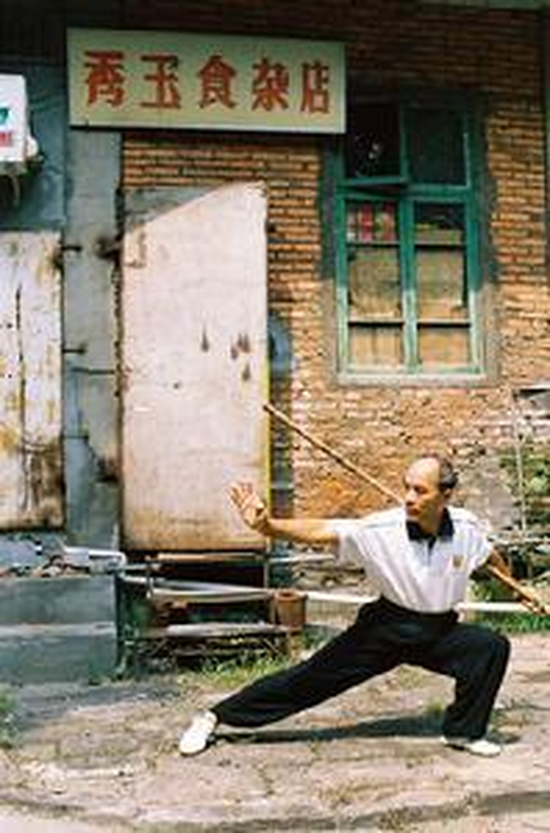 Breath, Bodyweight and Awareness 'Sink' Down Through the Lower Dantian (丹田) and Down Each Leg and Through the Feet into the Ground! The Immense Rebound Force Emits Upwards Through a 'Trembling' Reaction Which Gathers the qi Power into the Desired Area for Offense or Defence! Lin (林) Family Member Practices Outside Their Shop in Fuzhou! Root Ancestor (始祖 - Shi Zu) - Martial Teachings Later Evolved into Okinawan Goju Ryu Karate-Do. The extant Chinese language records state that Xie Chongxiang (谢崇祥) was also known as 'Xie Ru Ru' (谢如如) - and often referred to by his disciples and students as 'Ru Shi' (如师). He was trained in traditional Chinese martial arts by his teacher ‘Lin Dachong’ (林达崇) who was commonly referred to as 'Pan Yu Ba' (盘屿八). Xie Chongxiang was taught (and/or further developed) the following martial arts styles: a) 'Whooping Crane Fist' (鸣鹤拳 - Ming He Quan). b) 'Shaolin Arahant Fist' (少林罗汉拳 - Shao Lin Luo Han Quan). c) 'Shaolin White Crane Fist' (少林白鹤拳 - Shao Lin Bai He Quan). The third example is also often referred to as 'Fujian' (福建) White Crane Fist - whilst the ambiguous language used in his biography suggests that 'Whooping Crane Fist' (鸣鹤拳 - Ming He Quan) is an 'integration' of (and/or an 'improvement' upon) the 'Arahant Fist' (罗汉拳 - Luo Han Quan) style and the 'Shaolin' (or 'Fujian') White Crane Fist' (少林白鹤拳 - Shao Lin Bai He Quan) style (also referred to as 'Yongchun' [永春] White Crane Fist). (The use of the term 'Shaolin' here, refers to the idea that there once existed a number of 'Southern' (南 - Nan) Shaolin sister temples (to the famous 'Henan' Shaolin Temple) which existed in Quanzhou, Putian and Fuqing areas of Fujian province, etc, with each perfecting their own unique and distinct martial arts traditions that were spread out into the lay communities when these temples were destroyed for political reasons). This 'integrating' process appears to have been carried-out by Lin Dachong and Xie Chongxiang during their respective lifetimes. It seems that Lin Dachong built the foundation of 'Whooping Crane Fist' - whilst Xie Chongxiang further developed and completed this transformative process - eventually perfecting the 'Whooping Crane Fist' style! Xie Chongxiang is represented in a typical Confucian style of being a loyal and devout inheritor and preserver of the past - whilst also 'adding' to this wealth of ancient knowledge through his own ingenious innovations manifest through hard work and practical demonstration. He was known generally as ‘Xie Ru Ru’ (Esteemed Elder Brother Xie) even though his two first birth-names were ‘Chong’ and ‘Xiang’. At the age of 13 years old, he relocated (with his father) to the Taijiang coastal area of Northeast Fuzhou, where they lived next to Xing’an (星安) Bridge. His father was called ‘Xie Zunshi’ (谢尊志) and he was renowned as an expert in the fine craft of bamboo weaving and bamboo construction. This is how his father made a living in the Taijiang area. Xie Ru Ru first followed his father – learning the rudiments of the bamboo weaving and construction craft, but when he grew older, he was apprenticed back at his hometown under ‘Lin Kangguan’ (林康官) at the newly opened ‘Treasure Beautiful Fast’ (宝美斋 - Bao Mei Zhai) Shoe Shop! Xie Ru Ru was well-known for working very hard! He would labour all day learning his trade, whilst in the evening and at night he would learn martial arts (拳术 - Quan Shu) from a friend of his father – who came from the ‘Pan Yu’ (盘屿) area of Fuzhou. He was short in stature (about 1.55 meters) but was very stout and muscular in build! Records state that his right-arm was noticeably longer than his left-arm. As he worked so hard (carrying-out various and continuous types of manual labour), his body became very strong, and his mind became very calm (and focused). He was patient and long-suffering. He could endure physical hardship and did not allow the pain he experienced to disrupt his calm state of mind. Due to the development of his mind and body, and the difference in the length of his arms, Xie Ru Ru developed an open-hand (手 - Shou) martial arts style that emphasised (and distinguished) the ‘hard’ (刚 - Gang) and ‘soft’ (柔 - Rou) in its attacking and defending techniques – the two concepts of which were integrated through the developed perception of the mind of the practitioner! His longer (right-arm) was trained to pierce and penetrate the defence of the opponent with ‘hard’ techniques whilst the shorter (left-arm) acted as a highly effective ‘soft’ vehicle for deflecting, diverting and evading any of the opponent’s attacking techniques which threatened to strike the head, torso or lower body, etc. This led to a style whereby Xie Ru Ru fought with his longer right-arm forward – as this gave him the greater ‘attacking’ advantage in combat! When asked what ‘animal’ style this system represented, Xie Ru Ru explained that he had been taught ‘Crane’ (鹤 - He) style by other Masters – but that he had been observing how the White Crane species of bird behaved throughout the day, throughout the season, throughout the year and throughout its life! The White Crane often feigned ‘weakness’ or ‘over-exaggerated' a deficiency it already possessed! This would create an unfounded arrogance in the opponent and served to hide the strengths that the White Crane actually possessed! An over-confident opponent would unknowingly expose their natural weakness when they thought no threat was present! As Xie Ru Ru had strengthened his mind and body, he possessed an immense power which he applied at exactly the right moment in combat – just as the White Crane expertly pecked with its beak, kicked with its feet or deflected with its wings! The White Crane also stepped aside and made itself ‘non-present’ with a perfect timing – a skill that Xie Ru Ru also perfected exactly. This is why he referred to his style of fighting as ‘Crane Fist’ (鹤拳 - He Quan). The fighting style of Xie Ru Ru was eventually transmitted to Okinawa (which used to be a part of China and known as ‘Ryukyu’) where it was developed into what is today known as the ‘Goju Ryu’ style of Karate-Do. This is the ‘Hard-Soft’ School of fighting which has a Chinese origin premised upon the White Crane Fist fighting system. This association was confirmed in 1989 by some of the best leading scholars Mainland China possesses – and in the intervening years has stood the test of time and has resisted every challenge that has been made against it. It is very clear that Xie Ru Ru was the teacher of Higaonna Kanryo – recorded in Okinawa as ‘Ru Ru Ko’ - and it is very clear from Okinawan records (held within the Miyagi family) that Higaonna Kanryo held the martial abilities of Xie Ru Ru with the highest level of respect! Xie Ru Ru was born during the second year of the ‘Xianfeng’ (咸丰) era of the Qing Dynasty (1852), with his ancestral village located in the 'Daibian' (岱边) area of Changle (长乐) County Northeast Fujian province – situated about 20 miles East of Fuzhou. His family was typical of the day and was very poor. At the age of 13 years old, he went to Fuzhou, the provincial capital, with his father Xie Zunzhi. They lived in the Shuanghang (双杭) area near to the Xing'an Bridge. He first learned to be a fine bamboo craftsman, and later he became an apprentice in the Baomeizhai shoe shop opened by his fellow countryman Lin Kangguan. He worked hard during the day (strengthening his mind and body) and he then learned ‘Arahant Fist’ (罗汉拳 - Luo Han Quan) from a friend of his father named ‘Lin Dachong’ (林达崇) during the evening and at night! As he was short and stocky, and because his right-arm was longer than his left-arm, Xie Ru Ru developed a martial style that perfectly blended the ‘hard’ with the ‘soft’ (equating these two concepts with the perfect interaction of yin and yang 陰陽). The ‘hard’ represented the ‘external’ (外 - Wai) whilst the ‘soft’ represented the ‘internal’ (內 - Nei) - with the mind and perception of the practitioner distinguishing and integrating these two important and profound concepts. Although possessing a disability regarding the disproportional length of his arms, Xie Ru Ru was highly intelligent and used his circumstances to the best of his ability! Just like a White Crane (which appears weak and fragile), Xie Ru Ru used his natural attributes to a great advantage over his opponents! This in itself constitutes a great and profound achievement and demonstrates the triumph of the human spirit over the limitations presented by material reality. Xie Ru Ru was highly intelligent, and he used his advanced thinking ability to transcend the physical limitations that life had presented him with! The physical structure, behaviour and reactions of the Fujian White Crane offered Xie Ru Ru a vehicle to achieve this mind and body transformation! The material reality defining Xie Ru Ru’s body and living conditions provided him with a challenge which allowed him to develop the ‘Arahant Fist’ system he had learned from Lin Dachong (also known as ‘Pan Yu Ba’) - and to explore and further develop the White Crane system that Lin Dachong is recorded as experimenting with! The rapid application and interchange of ‘hard’ and ‘soft’ techniques formed the basis of Xie Ru Ru’s martial expertise. The record books state that Lin Dachong began the developmet of ‘Whooping Crane Fist’ (鸣鹤拳 - Ming He Quan) and the Xie Ru Ru continued this development and perfected the theoretical principles and practical applications of this style. Although training to toughen the mind and body – Xie Ru Ru perfected the application of overcoming an opponent through the exclusive use of ‘soft’ open-hand techniques. This ability prevailed in the midst of the most violent martial encounters! Xie Ru Ru would remain calm and indifferent to an opponent who was acting from greed, hatred and delusion! No matter how big, strong or violent an opponent was, Xie Ru Ru would expertly evade, deflect and ‘pierce’ the defence of these aggressors with a measured ease! Indeed, he became very famous and was renowned for his martial skills far and wide – certainly beyond the geographical limitations of Fuzhou! Xie Ru Ru mastered the ability of gathering and transporting (运 - Yun) the ‘Vital Force’ (气 - Qi) contained within the breath, bodyweight and will-power (intention) - so that it could be dramatically and radically expressed – copying the White Crane when it emits its ‘cry’ (鸣 - Ming) with a sudden and overwhelming power – which Xie Ru Ru expressed in a kick, punch, block, deflection or other type of strike! Although perfecting a ‘relaxed’ body, Xie Ru Ru could suddenly gather all the ‘qi’ energy into a certain bodily area and express this as a temporary but extreme form of muscular ‘tension’ - termed ‘Iron Vest’ (铁布杉 - Tie Bu Shan) - within Chinese martial arts! Xie Ru Ru could also ‘tense’ his entire musculature for extended lengths of time – an unusual ability even amongst those who had perfected the Iron Vest technique! When all these martial abilities Xie Ru Ru possessed were gathered together, they were said to be expressed perfectly through the ‘Whooping Crane Fist’ (鸣鹤拳 - Ming He Quan) system! The White Crane is relaxed and apparently ‘unconcerned’ about circumstantial dangers – but suddenly it emits a piercing ‘cry’ as all the qi energy is directed to a pinnacle of martial expression! Xie Ru Ru mastered the ability to express a devastating, fast and momentarily ‘tense’ martial technique that devastated the opponent before naturally retracting this qi energy back into the mind and body - and ‘returning’ this qi energy back into a relaxed state of ‘rest’ and position of ‘replenishment’ (and ‘regathering’). This is the White Crane fluttering its feathers, realigning its wings and going back to stepping around its living space and seeking out food in the ground with its beak! At this time there was a well-known martial arts expert who was resident at the General’s Mansion in the local area. He was employed as a ‘bodyguard’ for local government officials and appears to have been a Buddhist monk as he was known as the ‘Venerable Xiao’ (萧和尚 - Xiao He Shang). He had been told that there was a very good martial arts Master living in the local area who possessed a number of unusual martial arts abilities. The ‘Venerable Xiao’ was employed to teach the local militia a superior martial arts ability that could be used to police the local population! The problem was that local people were saying that Xie Ru Ru was a better martial artist than the ‘Venerable Xiao’! If this was the case, then why was the ‘Venerable Xiao’ being employed in the high governmental post he was currently occupying? One day, ‘Venerable Xiao’ met with Xie Ru Ru and they discussed their respective martial arts – and engaged in a friendly sparring match – which Xie Ru Ru won easily. ‘Venerable Xiao’ bowed down and recognised Xie Ru Ru as his teacher – thanking him for the valuable lesson! There was also a local doctor named ‘Wang Shi’an’ (王士庵) who was an expert in medicine and martial arts. When Wang Shi’an challenged Xie Ru Ru – Xie Ru Ru prevailed easily and Wang Shi’an recognised Xie Ru Ru’s superior martial ability. Meanwhile, Xie Ru Ru recognised the medical expertise of Wang Shi’an - and stated that genuine Chinese martial arts are partly effective self-defence combative techniques on the one hand, whilst on the other hand are reinforced by the ability to ‘heal’ and to ‘treat’ people when injured and/or ill! Xie Ru Ru explained that this dichotomy is yet another example of the harmonious interaction of ‘hard’ and ‘soft’ approaches to the polarity that defines reality. *Sometimes written as ‘Xie Zongxiang’ (谢宗祥) Chinese Language Source: 谢如如
谢崇祥,男,福建福州长乐县人,中国武术名家,为鸣鹤拳传人。 谢崇祥为长乐县岱边人,小名如如,他的徒弟称呼他为如师。师从潘屿八,学习南少林白鹤拳,后以拳技闻名于福建。 琉球刚柔流空手道始祖 谢如如字崇祥,13岁随父迁居福州台江星安桥畔,父亲谢尊志在台江作细竹工谋生,如如随父亲学作竹匠。后往同乡林康官开设的宝美斋鞋铺当学徒。如如生性勤劳,白天学艺,晚上拜其父好友(盘屿人)学习拳术。他身材矮小(约1.55米左右),体格粗壮,右臂长于左臂,由于他刻苦锻炼,创造一种刚柔手法,形成独具风格的鹤拳。 琉球刚柔流空手道始祖谢如如,生于清咸丰二年(1852年),祖籍长乐县。家贫,13岁时随父谢尊志到省城福州闯荡,住在双杭星安桥畔。最初学习做细竹匠,后来又到同乡人林康官开设的宝美斋鞋店当学徒。他白日学艺,晚上跟父亲好友、南台岛盘屿人林达崇学习罗汉拳。谢如如个子矮小但体格强壮,他的右臂比左臂长,因而具有天然的优势,加上天资聪颖,就独创了一套刚柔手拳术。这种柔手法风格的鹤拳,因运气时声如鹤鸣,遂名为“鸣鹤拳”。当时有个叫“萧和尚”的将军府武术教练,听说了谢如如的事,找上门来要切磋,结果交手即败,最后甘拜下风,拜谢如如为师。当时拜谢如如为师的还有一位医生名叫王士庵,武德医德相得益彰。 Dear Tony The Chinese language encyclopaedia pages regarding Miyagi Chojun suggest that he went to China in 1915 to meet 'Shi Gong' (Xei Chongxiang) and other gongfu masters because Higaonna Kanyro was still in regular communication with them! Assuming this communication was by the written word (although it could have been by word of mouth), then there should be a written record somewhere in China even if all the replies were destroyed in 1945 in Okinawa! Furthermore, and more to the point, Miyagi Chojun was probably the first visitor to Xie Chongxiang from Okinawa since Higaonna Kanryo left in 1881 - so here is our answer to some extent! Miyagi Chojun probably conveyed all the history he knew of Higaonna Kanryo's earlier visit and education in China - to any and all the Chinese Masters he met - thus spreading the knowledge! Modern Okinawan Goju Ryu Karate-Do is comprised of the following Chinese martial arts styles and systems: a) Fujian White Crane Fist (福建白鶴拳 - Fu Jian Bai He Quan) - which originated in Yongchun County. b) Southern Shaolin Fist (南少林拳 - Nan Shao Lin Quan) - probably Quanzhou, but also the sister temples of Putian and Fuqing. based upon Pan Yu Ba's 'Eighteen Arahant Fist' (羅漢拳 - Luo Han Quan). c) Whooping Crane Fist (鳴鶴拳 - Ming He Quan). From (and between) 1912-1915 with the arrival of Wu Xiangui (Go Ken Ki) on the scene! I suspect Wu Xiangui introduced Miyagi Chojun to 'Whooping Crane' in Okinawa - but then took him to see his Master (Xie Chongxiang) in 1915 as a representative of Higaonna Kanryo (as Higaonna Kanryo was too ill to travel). I think the outer frame of Goju Ryu is obviously Southern Fist - which looks very 'Northern' in part and perhaps this is the origination of the wide and broad Horse Stance (which looks just like our Longfist Forms)! The 'inner' frame of Goju Ryo is Fujian White Crane - which has a crossover with such arts as Taijiquan, Xingyi, Xinyi and Baguazhang, etc! The maintaining of 'tension' was taught to me as 'steel wire' in English but I later found out the proper Chinese term is '缠丝劲' (Chan Si Jin) - or 'winding silk unyielding force'. This is taught within Taijiquan and all authentic forms of White Crane. The power is relentless, endless, self-propelling and self-replicating. It is not dependent upon physical fitness (although it is acquired only after a life time of relentless mind-body training without mercy) and is not negated or diverted by physical conditions. It is a universal force that operates regardless of life or death. My Master used to say that it is like a heavy iron ball rolling in all and any directions! Nothing can stop it. The secret lies in the Kata construction of Goju Ryu which is as follows: Higaoona Kanryo Fujian White Crane Fist and Southern Fist Forms (Katas) brought back from Fuzhou - China (c. 1881): 碎破 (Sui Po) = Saifa 制引战 (Zhi Yin Zhan) = Seiyunchin 四向战 (Si Xiang Zhan) = Shisochin 三十六手 (San Shi Liu Shou) = Sanseru 十八手 (Shi Ba Shou) = Seipai 久留顿破 (Jiu Liu Dun Po) = Kururunfa 十三手 (Shi San Shou) = Seisan 一百零八手 (Yi Bai Ling Ba Shou) = Suparinpei 三战等 (San Zhan) = Sanchin Miyagi Chojun Whooping Crane Form (Kata) brought back from Fuzhou - China (1915) 六机手 (Liu Ju Shou) = Rokuki - later developed into 'Tensho' (转掌 - Zhan Zhuan). Wang Xiangui came to Okinawa in 1912 (where he lived until his death in 1940) - he was sent to assist Higaonna Kanryo by Xie Chongxiang (Higaonna Kanryo died in 1915). Became Miyagi Chojun's teacher and accompanied him to and from China in 1915. Miyagi Chojun - Constructed Kata (1937) In 1937, when Japan declared war on China, Miyagi Chojun is employed as a High School Sport Instructor and tasked with teaching Goju Ryu Karate-Do to High School Students destined to be recruited into the Imperial Japanese Army. Goju Ryu training proved too difficult in its traditional form for short-term students passing through limited-time classes - so Miyagi Chojun carefully constructed two Basic Katas that convey a sound appreciation of self-defence: 击碎第一 (Ji Sui Di Yi) = Gekisai Dai-Ichi* 击碎第二 (Ji Sui Di Er) = Gekisai Dai-Ni* Within these two Katas - Miyagi Chojun introduced the concept of the '上段扬受' (Shang Duan Yang Shou) - or 'Jo Dan Age Uke' in Okinawan. This is a highly technical term that translates as 'Upper Level Raising Interception' - and which today is universally known by its English translation of 'Upper Block'. (This upper 'blocking' technique involves the coordinated crossing, rubbing and inter-changing of the toughened fore-arms (with closed fists) in front of the chest area as each is alternatively raised above the forehead (whilst defending the middle and upper levels) - with the intention of deflecting a downward descending blow directed to the top of the head - or diverting a straight punch or similar strike to the face, etc. Today, the exact angle of the raised block with the closed hand varies according to the preference of the Karate-Do style). According to Chinese language sources, this 'Upper Block' did not exist in the Karate-Do styles extant upon the island of Okinawa prior to 1937 - and that Miyagi Chojun is recognised as the sole originator of this technique as practiced within the art of Karate-Do. Prior to this, the Naha-Te - Goju Ryu style utilised a typical White Crane defence that saw an elevated mid-level defence raised up to neck and head height - where the palm and fingers of the open hands would deflect (or slap) blows away to the side. Miyagi Chojun may have seen similar upper blocking movements whilst observing other Chinese styles of martial arts (where these movements are often a combination of a closed handed punch and a fore-arm deflection) - different Chinese martial styles that had not yet penetrated Okinawa or the Karate-Do community! Thanks Adrian *These Katas were a product of rampant Japanese 'Nationalism' and were designed, at the time, to prepare the minds and bodies of young Japanese men (for their stint in the military) from 1937 onwards to attack and kill Chinese men, women and children. From 1941 onwards, this Japanese 'Nationalist' aggression would be aimed at civilian populations throughout Asia, and include the militaries of the West, etc. In late 1945, this Japanese 'Nationalist' aggression would be aimed at the Soviet Red Army as it strove to 'Liberate' (Manchuria - Northeast China) from Imperialist Japanese Occupation! I am reminded of Funakoshi Gichin's biography where he proudly mentioned himself preparing thousands of young Japanese men for 'unarmed' Karate 'Banzai' charges aimed primarily at attacking US soldiers! It is ironic that all those non-Japanese people who practice Japanese Karate-Do throughout the world today, have absolutely no idea of the 'racist' historical reality 'embedded' in many of the more recent 'Katas' still taught to beginners as primers for the style!
Quanzhou: The Birthplace of Yongchun White Crane Fist – A World Famous Chinese Martial Art!8/15/2022 Translated By Shifu Adrian Chan-Wyles PhD ( © ) Yongchun (永春) White Crane Fist (白鹤拳 - Bai He Quan) is one of the seven major martial arts styles developed in Fujian Province. It was created during the late Ming and early Qing Dynasties and has spread throughout China, Southeast Asia, Europe and the United States. It is a national heritage of immeasurable cultural importance! The Southern Shaolin Fighting Method (南少林拳法 - Nan Shao Lin Quan Fa) - which developed during the Tang and Song Dynasties – was popular in Fujian by the middle of the Ming Dynasty. In the Fujian area of Yongchun - no matter whether in the city or the countryside - there were countless practitioners of martial arts! The Southern Shaolin System was prevalent but with such styles as ‘Taizu’ (太祖) or ‘Grand Ancestor’ and ‘Houquan’ (猴拳) or ‘Monkey Fist’ being very prevalent! The area was economically and culturally prosperous! The ‘History of the Ming Dynasty’ (明史 - Ming Shi), Volume 91, Martial Aspiration Three (兵志三 - Bing Zhi San) - Recollections (记载 - Ji Zai) states: ‘The people of Yongchun possess tremendous fighting-spirit and are highly skilled in martial arts practice!’ Therefore, it can be historically proved that the Yongchun people's practice of martial arts has been highly developed as early as the middle of the Ming Dynasty! Yongchun White Crane Fist is one of the seven major fighting styles developed in Fujian Province. It was founded during the late Ming and early Qing dynasties. It takes the ‘White Crane’ bird as its spiritual, psychological and physical inspiration (形 - Xing) or ‘Form’ (‘Kata’ in Japanese martial arts) and manifests this inspiration in its general fighting method! The White Crane practitioner understands how to ‘move’ and remain ‘still’ - and how to transition between these two states with a smooth and non-confused accuracy controlled by an underlying higher knowledge that embraces the practitioner, the opponent and the environment! Furthermore, a White Crane practitioner fully comprehends the ‘empty’ (虚 - Xu) and the ‘full’ (实 - Shi) and how and when each is to be used so that the opponent is continuously ‘uprooted’ - whilst the White Crane practitioner is continuously strengthened! All the energy channels in the body (the eight extraordinary and the twelve ordinary) are opened, unified and fully functioning (transporting and strengthening Qi 精, Jing 氣 and Shen 神)! As this is the case, the mind, body and spirit are unified, just as the bones and joints are aligned (allowing the bodyweight to drop into the ground – and effortlessly rebound back up and out of the body – through the relevant striking areas). All movement is perfectly timed, and the speed is so fast that an opponent has difficulty discerning the blows as they are naturally ‘released’ from the limbs of the White Crane practitioner! The hands and feet alternate with a perfect timing and balance that is bewildering to encounter! The White Crane practitioner can ‘vary’ the 'speed’ of each blow so as to bypass the habitual (and expected) movements of an opponent’s defensive reactions! The White Crane practitioner can be as solid as a mountain or as light a feather – depending upon the ‘intention’ of the practitioner and the necessity of the moment! Those who master these ‘internal’ Shaolin martial arts can appear to ‘manifest’ and ‘disappear’ at will – as they manipulate the perception of the opponent! This is why there is said to be a blend of ‘hard’ and ‘soft’ martial techniques! This style has been circulating in China and Southeast Asia for more than 300 years, and it is popular in Europe and the United States. As a consequence, this type of Chinese martial art is considered a quintessential manifestation of Chinese martial culture! According to research - Ip Man (叶问 - Ye Wen) who is well-known at home and abroad as the teacher of the great Bruce Lee – taught his style of ‘Wing Chun Fist’ (咏春拳 - Yong Chun Quan) which was heavily influenced by the fighting techniques of Yongchun White Crane Fist. Bruce Lee used all this martial arts knowledge to later develop his system of fighting termed ‘Jeet Kune Do’ (截拳道 - Jie Quan Dao)! Furthermore, Chinese, Okinawan and Japanese scholars all agree that the style of fighting known as ‘Goju Ryu Karate-Do' (刚柔流空手道 - Gang Rou Liu Kong Shou Dao) has its theoretical and technical roots firmly embedded in the fertile martial ground that is Yongchun White Crane Fist! Chen Hong (陈弘) - the President of the China Yongchun White Crane Fist Research Association - pointed out that there are many technical similarities between Fujian Yongchun White Crane Fist and the Guangdong martial style known as ‘Wing Chun Kune’ (咏春拳 - Yong Chun Quan)! For instance, before issuing a blow, the Yongchun White Crane Fist practitioner must first centre his or her own mind, body and spirit – gather up the accumulated energy and direct this ball of power toward the ‘centre-line’ of the opponent’s body! This gather and emitting ‘internal’ and ‘external’ power through the Conception Vessel 任脉 - Ren Mai) - whilst targeting the Conception Vessel of the opponent! This is the real meaning behind the ‘Centre-Line Theory’ which many only pay lip-service to. This is identical to the ‘Centre-Line’ theory as found in Wing Chun (and many other martial systems)! Furthermore, Wing Chun is also famous for the power its practitioners produce during their ‘one-inch punch’ demonstrations! This is termed ‘寸劲’ (Cum Jin) or ‘inch strength’ or the ability to generate ‘explosive short-range power’! Within Yongchun White Crane Fist, this same ability is known as ‘寸劲节力’ (Cum Jin Jie Li) or ‘inch power direct energy’! In both systems the feet are generally rooted with the knees remaining flexible to accommodate a dextrous upper body which delivers fast and massively powerful blows of all descriptions, landing at all levels! These include open and closed hands, fore-arms, elbow-strikes, upper-arms, shoulder and blows with the head! The torso ‘twists’ left and right through the pelvis and around the spine – whilst swaying and leaning left and right (forward and back at oblique angles) – all through, around, away from and back to the ‘centre-line’! The famous ‘chi-sow’ (黐手 - Chi Shou) or ‘stick hand’ technique of Wing Chun is very similar to the ‘pan shou’ (盘手) ‘enveloping hand’ technique found in Yongchun White Crane Fist! Although Wing Chun has been developed for more than 100 years, and is a renowned style of fighting, nevertheless, the shadow of Yongchun White Crane Fist still clearly looms in the background! Chen Hong (陈弘) has been researching the theory and practice of Yongchun White Crane Fist for many years, particularly with regards to practitioners living or taking refuge within Guangdong! During the Qing Dynasty reign of emperors Xianfeng (咸丰) [reigned 1850-1861] - and the Tongzhi (同治) emperor (reigned 1861-1875) - there lived a couple of Yongchun White Crane Masters named ‘Lin Jun’ (林俊) and Chen Hu (陈湖) who took an active part in the Peasant Uprisings! Indeed, many such martial arts Masters participated in these uprising! Hong Xiuquan (洪秀全) led the ‘Taiping Heavenly Kingdom’ uprising which engulfed large parts of China – including Fujian province! ‘Lin Jun’ (林俊) was personally appointed by Hong Xiuquan (洪秀全) as one of the ‘Strong Kings of Three Thousand Years’ - stationed in the Fujian area! This gave him command of thousands of Taiping troops! Despite many early victories and tremendous battles – the Taiping were defeated, and the surviving rebels had to flee! Many of these fugitives fled all over China whilst being pursued by a Qing Army led by ‘Zou Zongtang’ (左宗棠) - which drove them out of Fujian and into the Guangdong and Zhejiang areas – where the Yongchun White Crane Fist practitioners had to adopt disguises and live secret lives (whilst teaching disciples behind the scenes – often at night)! These survivors were inspired by ‘Lin Jun’ (林俊) - where his reputation is still bright and shining in China today! During the mid-Qing Dynasty, with the increasingly frequent unofficial cultural exchanges between Okinawa (Ryukyu), Japan and Taiwan, some White Crane Fist disciples went to Dongying (东瀛) to teach martial arts; many Japanese merchants who travelled to the Mainland for business and employment, also began to learn White Crane Fist and transmitted it back to Japan. During 1877, Higaonna Kanryo travelled from Okinawa to Fuzhou and studied Yongchun White Crane Fist. After three years of intense training, Higaonna Kanryo returned to his home in Okinawa – transmitting White Crane Fist as he went! After integrating White Crane Fist with Okinawan fighting techniques – the art of ‘Goju Ryu’ Karate-Do was eventually developed (by Miyagi Chojun – the key disciple of Higaonna Kanryo in Okinawa). It is clear from this example that White Crane Fist rejuvenated the Okinawan fighting arts! Another example lies with ‘Wang Xiangui’ (吴贤贵) who used to work for the Fuzhou Tower River Water Ministry (福州台江水部的 - Fu Zhou Tai Jiang Shui Bu) - but in 1912 he travelled to Okinawa where he met Higaonna Kanryo – who had established the ‘Eternal Light’ (永光 - Yongguang) Tea Shop (茶行 - Cha Xing). As he saw that Higaonna Kanryo and his disciples already knew ‘Yongchun White Crane Fist’ - he decided to teach the Okinawans the ‘Whooping Crane Fist’ (鸣鹤拳 - Ming He Quan) variant! It was the disciples of Higaonna Kanryo who had trained with Wu Xiangui that formed the ‘Okinawa Strong Foundation Association’ (冲绳刚泊会 - Chong Sheng Gang Po Hui)! Tokashiki, the President of Japan's Okinawa Goju Ryu Karate-Do Association, has been searching for many years to find the identity of the Chinese Masters who taught Higaonna Kanryo! Finally, the source of Yongchun White Crane Fist in Okinawa was discovered in Fujian - and a "remarkable monument" was raised in the Fujian Provincial Sports Centre (in 1990)! During October 1928, the first national martial arts examination was held in Nanjing since its abolition in 1911 – following the overthrow and abolition of the Qing Dynasty and its feudalist and imperialistic system! Yongchun County in Fujian sent a martial arts expert known as ‘Jin jing’ (晋京) - who placed first in every category and won every available award! Indeed, Yongchun as a place was awarded with the title ‘Central Hall of Martial Arts Execellence’ (中央国术馆 - Zhong Yang Guo Shu Guan)! This meant that a government-sponsored centre of martial arts practice was established, legally protected and funded in the Fujian area! The advent of Yongchun White Crane Fist in the 20th century served to strengthen China not only in the eyes of its own people – but also in the eyes of those across the world – a view held and expressed by Mr. Tan Kah Kee (陈嘉庚) - who further stated, ‘China as a country has been strengthened by the vigour of our own martial arts!’ He also said, ‘Promote the strengthening essence and eradicate the weak!’ During August 1929, in his honour, he requested that the Yongchun White Crane Fist School contribute to the formation of a ‘Central Martial Arts Hall Southern Fujian Martial Arts Touring and Exhibition Group’ be formed to travel around China and to do so abroad! Its first performance was at ‘Xingma’ (星马) - but became the first martial arts delegation to go abroad in the history of Chinese Martial arts - creating a precedent for overseas cultural exchanges focusing upon martial culture! Mr. Tan Kah Kee met with all the members of the martial arts troupe many times to promote the concept of ‘strengthening the country by promoting martial arts’, and on the spot, he gave the correct title to the Southern Fujian Martial Arts Troupe: ‘Who is the sick man of East Asia – Certainly not the Chinese people! This shame is eradicated by the mastery of Wu Weiyang (武维扬)! Do not forget that the grandsons and granddaughters of the Yellow Emperor can be reborn anywhere – even as fishes! Perhaps the Heros of the Central Plane Create Cities that are dry!’ In 2008, Yongchun White Crane Fist was included in the national heritage list as being of immeasurable cultural value! Today, there are an estimated 100,000 practitioners of Yongchun White Crane Fist, with thousands of experts and hundreds of top-class Masters! Fuzhou has also successfully held the first World Conference for Yongchun White Crane Fist – which attracted thousands of diverse people from all over the world – including many hundreds of Karate-Do practitioners! Yongchun White Crane Fist has also been a vehicle for good-natured and friendly exchanges across the straits! Throughout the martial arts competitions of the world - Yongchun White Crane Fist practitioners won more than 1,000 awards in various competitions at all levels! This style of martial culture is deeply rooted in Okinawa and across the world! As the theoretical and technical foundation for Okinawan Karate-Do – particularly GoJu Ryu – Yong Chun White Crane Fist has inspired a rich academic research genre, that has spread from educational facilities and on to the internet, as well as in books and in films! There have even been theatre performances, plays and other ‘live’ action and educational activities! At the same time, Yongchun White Crane Fist is entering the fields of health, culture and tourism, etc., and its comprehensive and all-round positive effect is becoming increasingly apparent. The United Kingdom, France, Germany, Russia, Moldova, Poland, the United States, Sweden, Switzerland, Iran, Malaysia and other countries, as well as Hong Kong, Macao and Taiwan, have all established professional organizations for the inheritance and practice of Yongchun White Crane Fist - in order to establish the ‘World Yongchun White Crane Fist Association' - which now has now laid a solid foundation. Reporter: Ceng Guangtai (曾广太)
Correspondents: Chen Hong (陈弘) & Zhou Lili (周莉莉) - Text & Photographs (Except Signatured) |
AuthorShifu Adrian Chan-Wyles (b. 1967) - Lineage (Generational) Inheritor of the Ch'an Dao Hakka Gongfu System. |
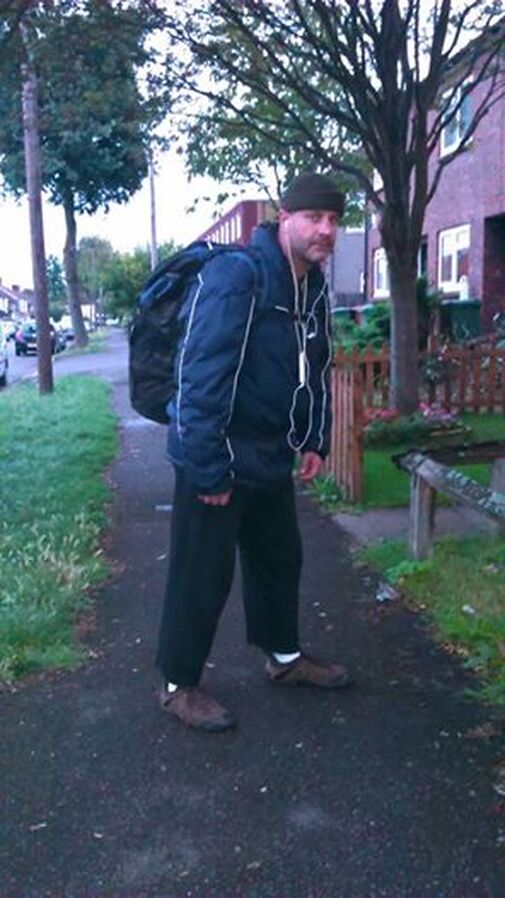
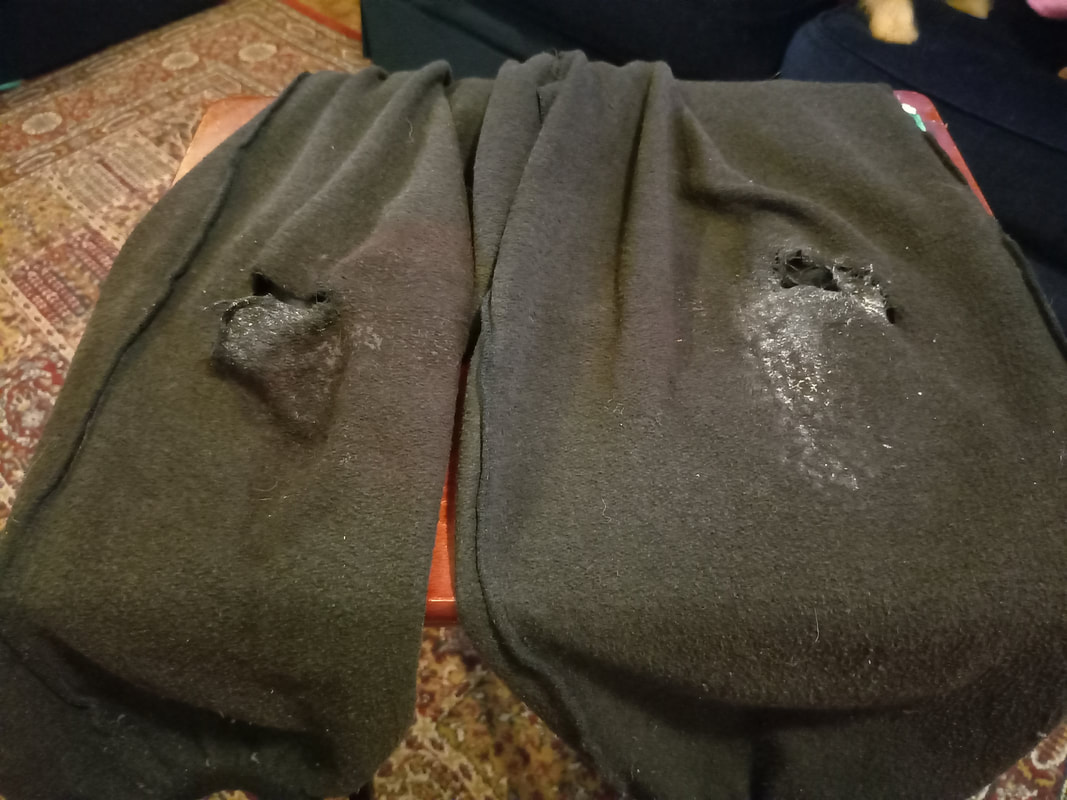
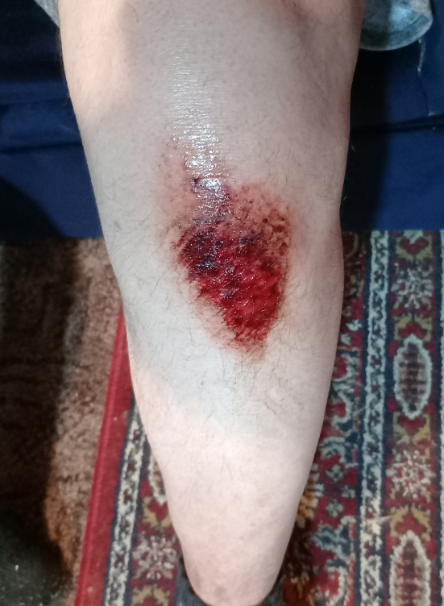
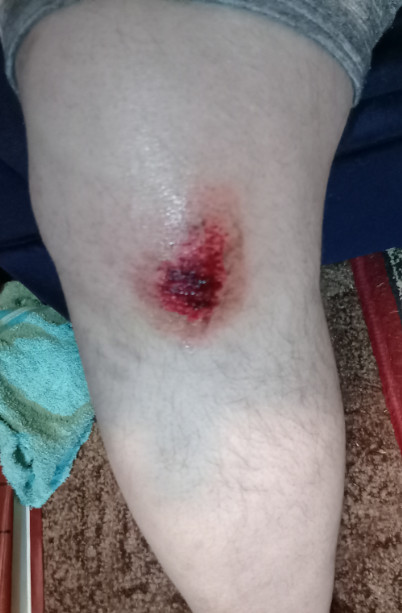
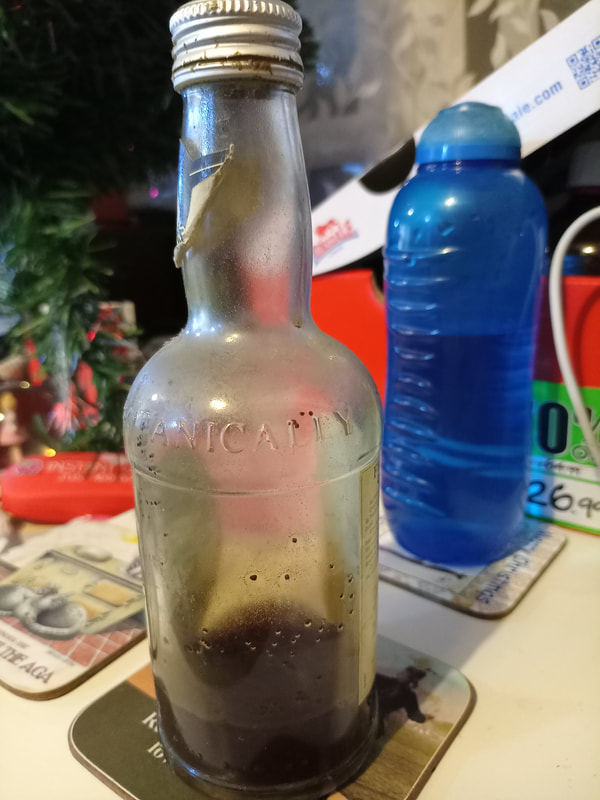
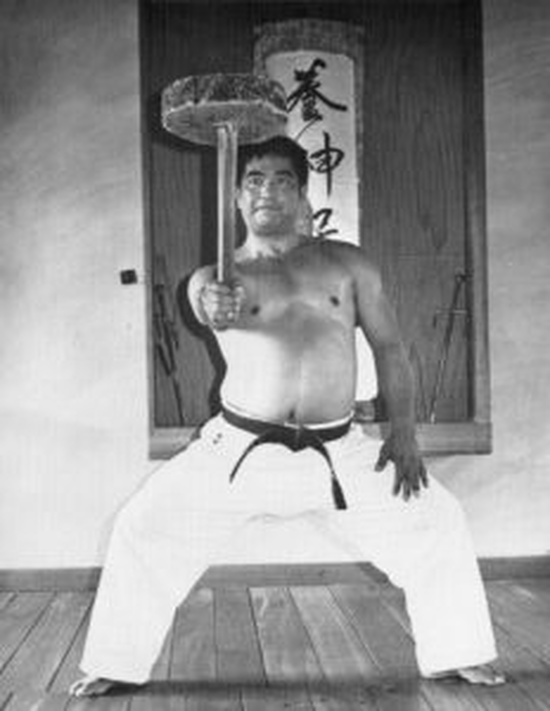
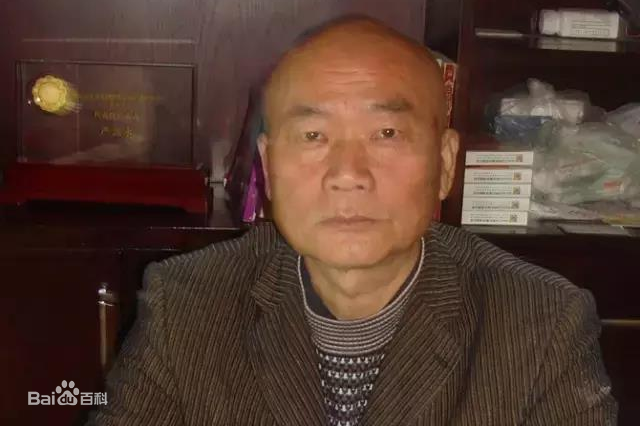
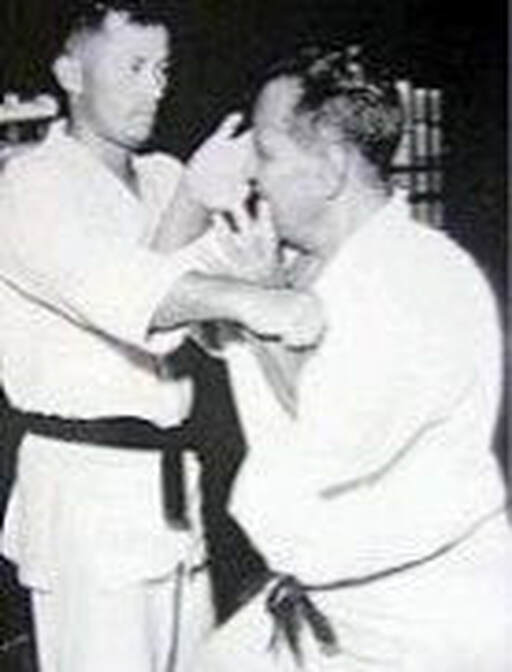
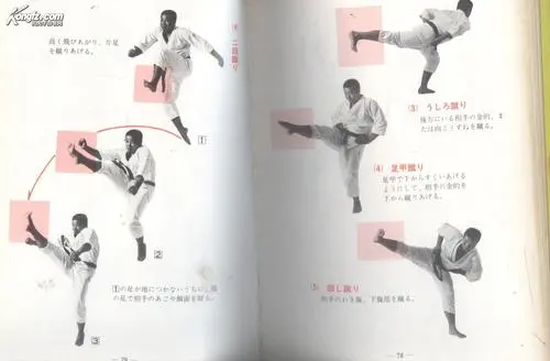
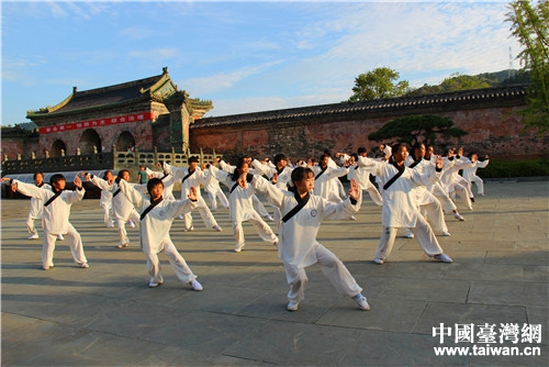
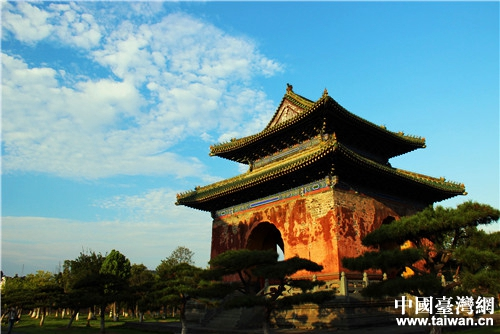
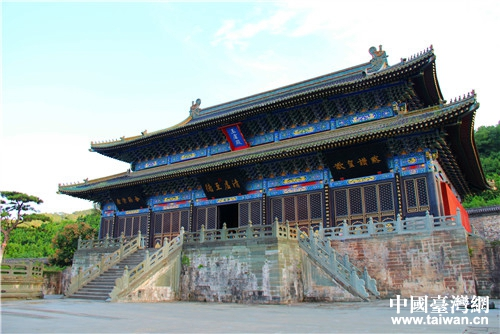
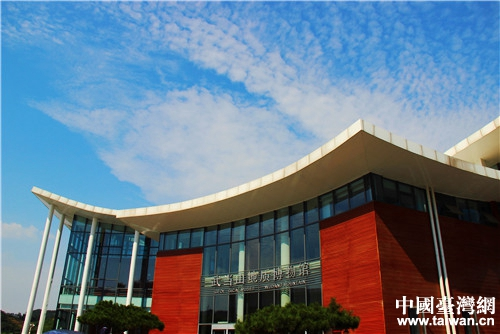
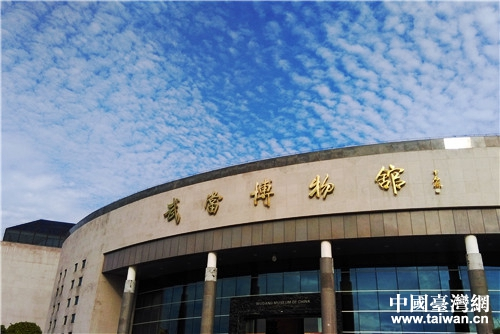
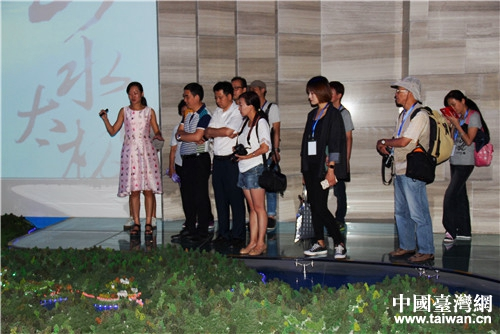
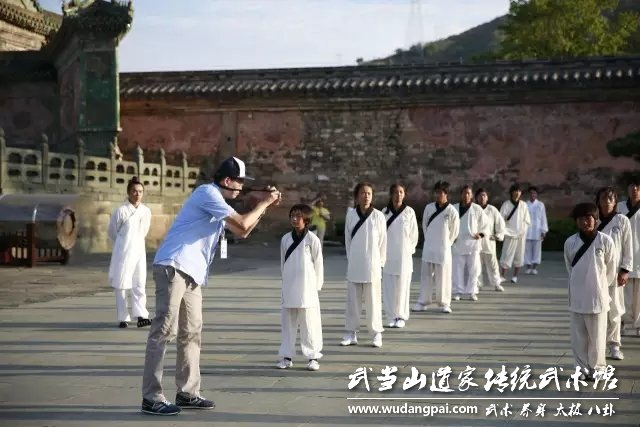
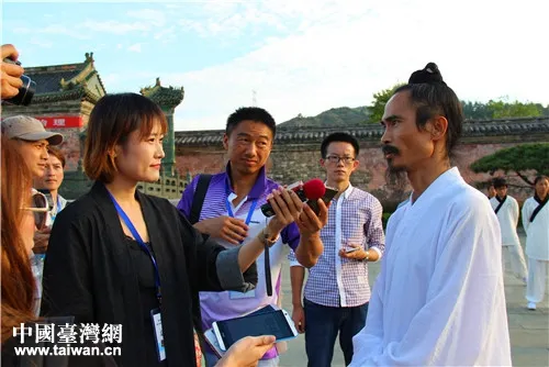
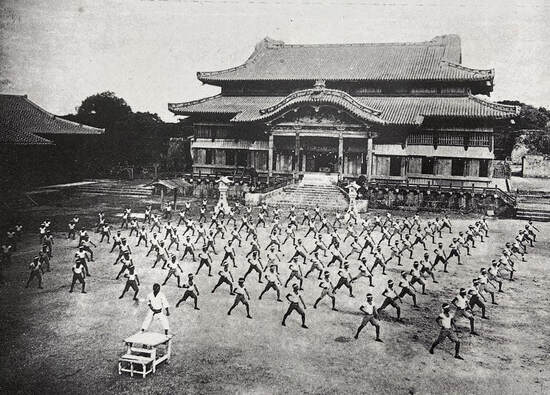
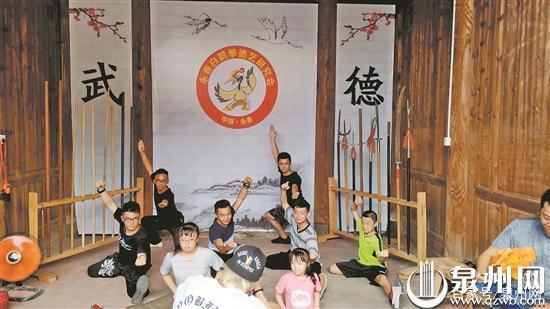
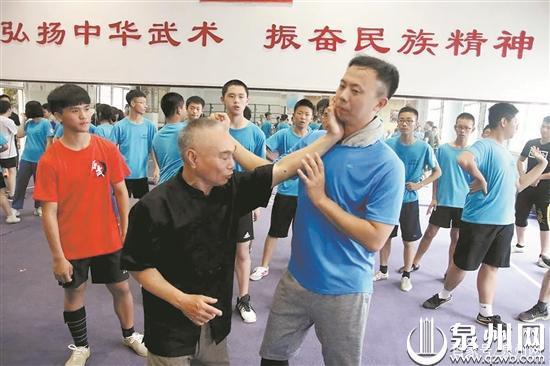
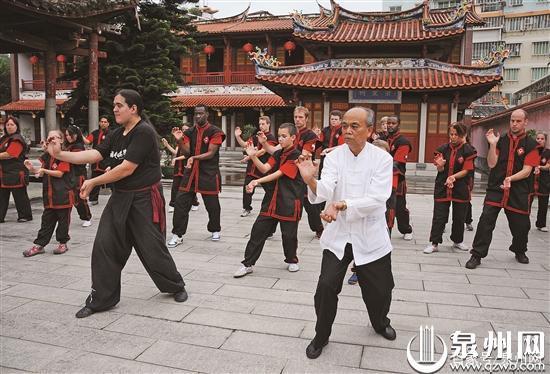
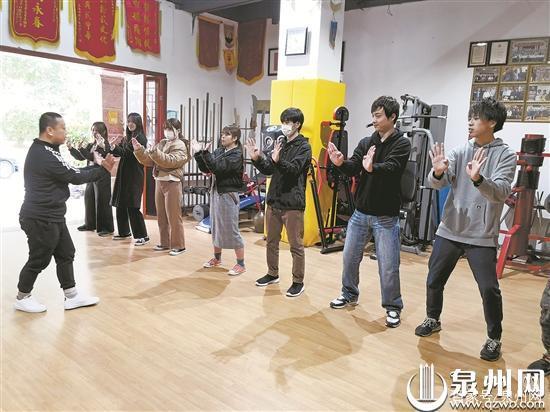
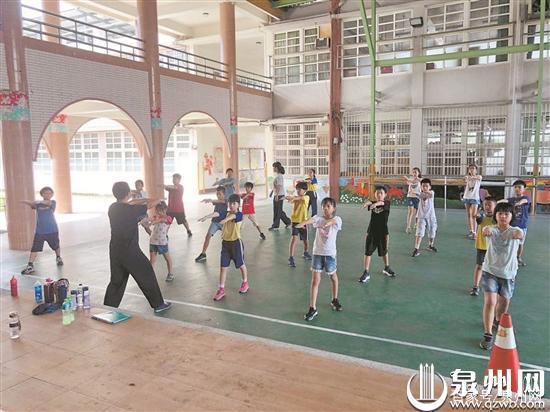
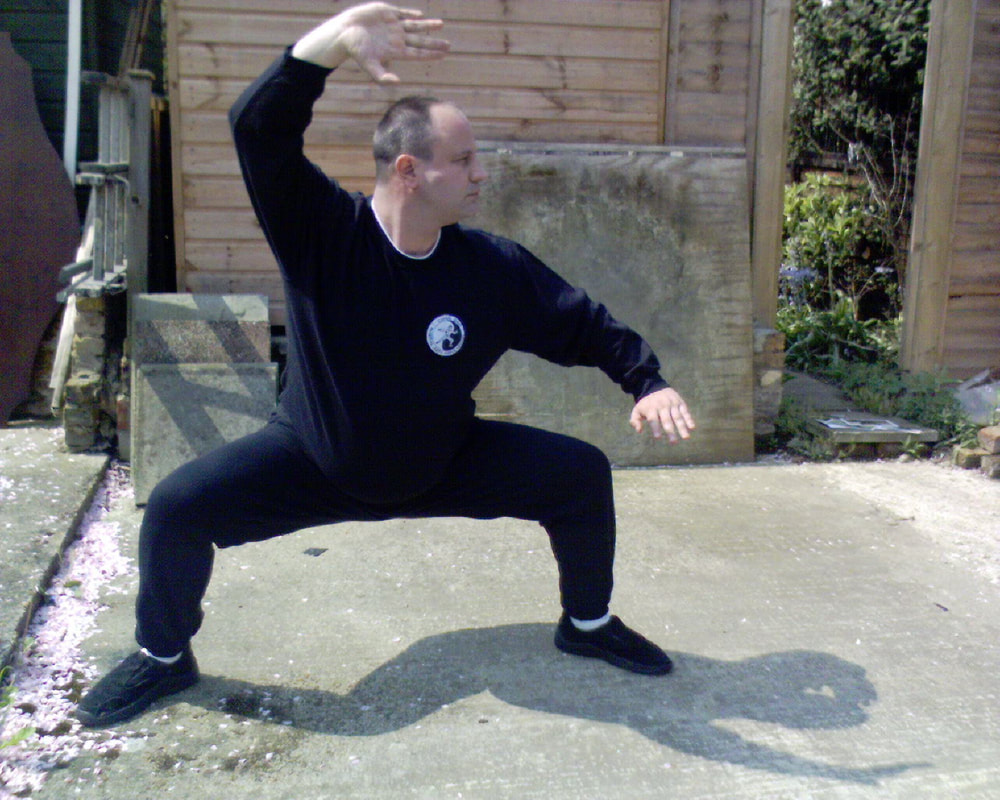
 RSS Feed
RSS Feed